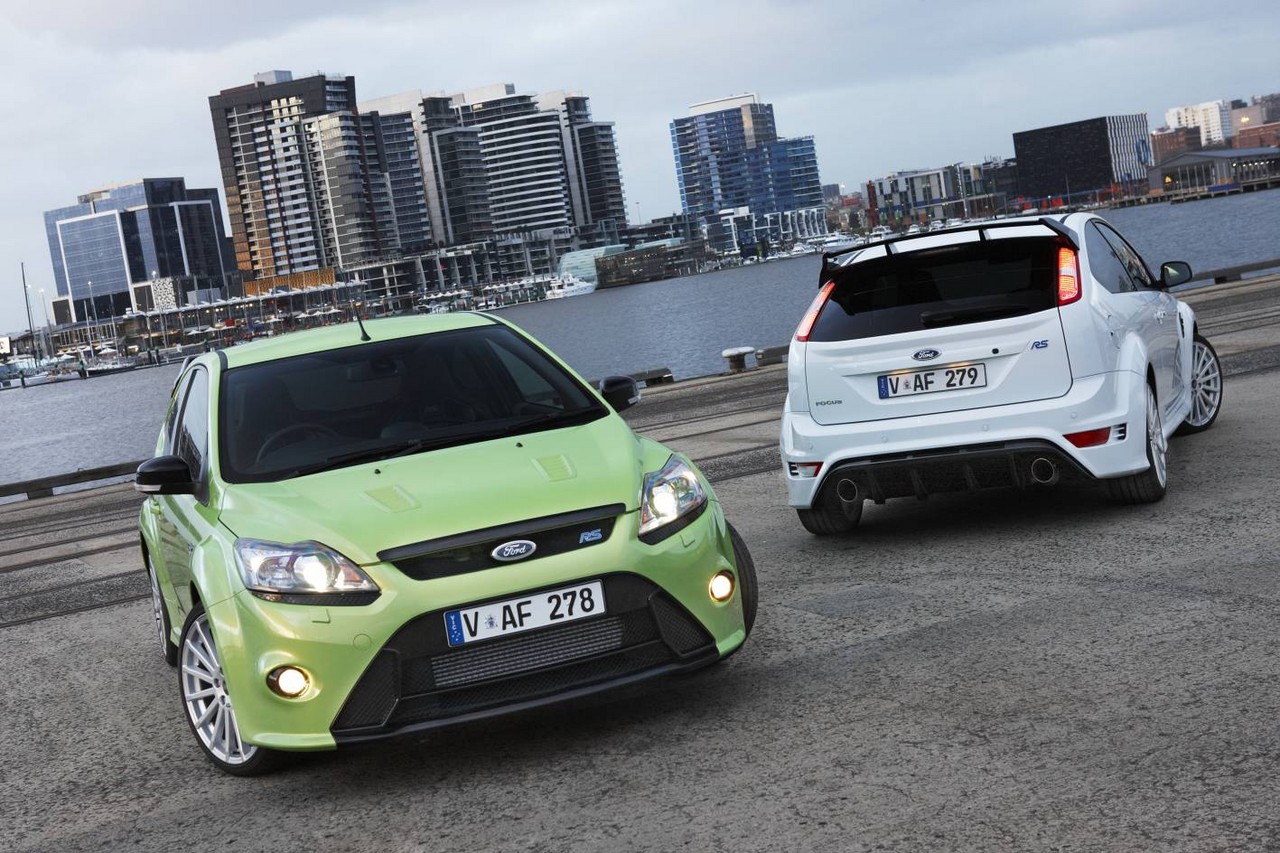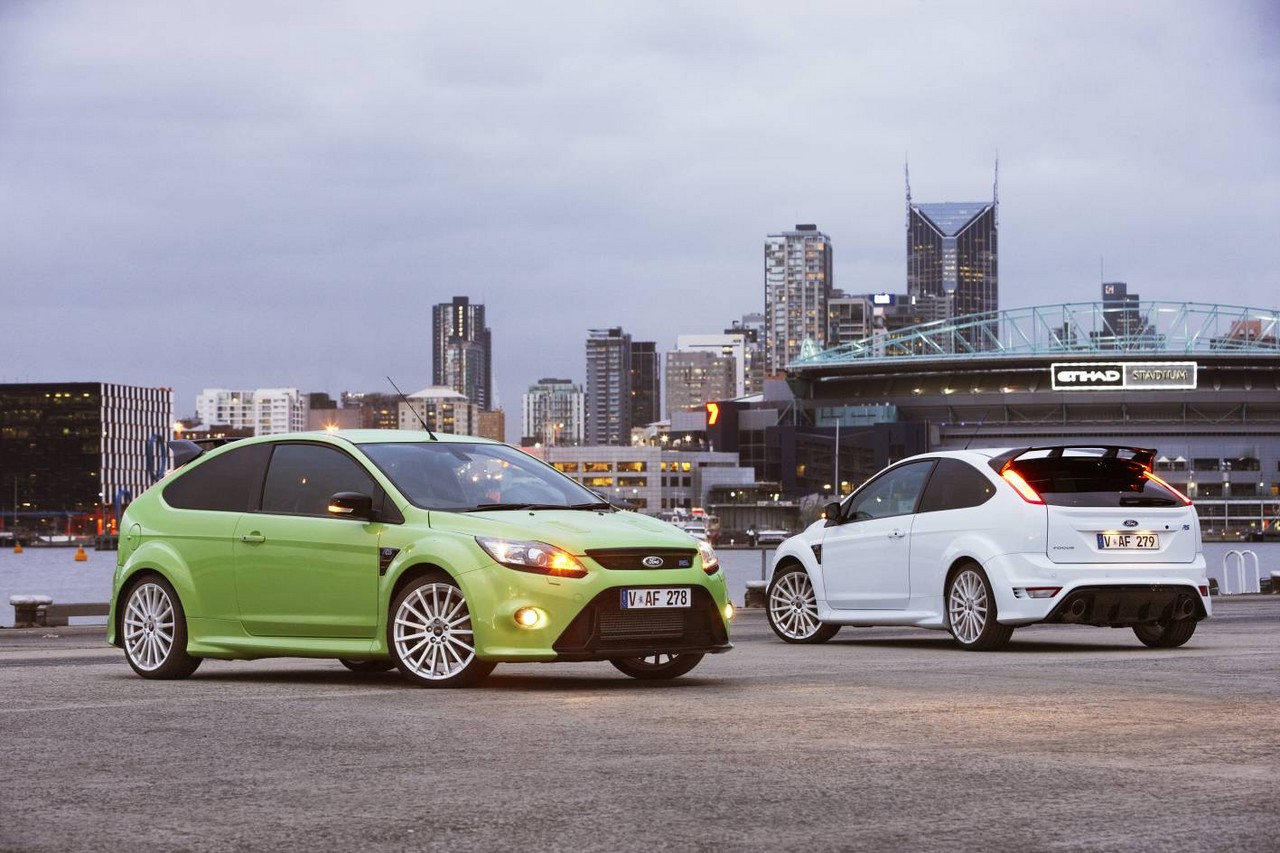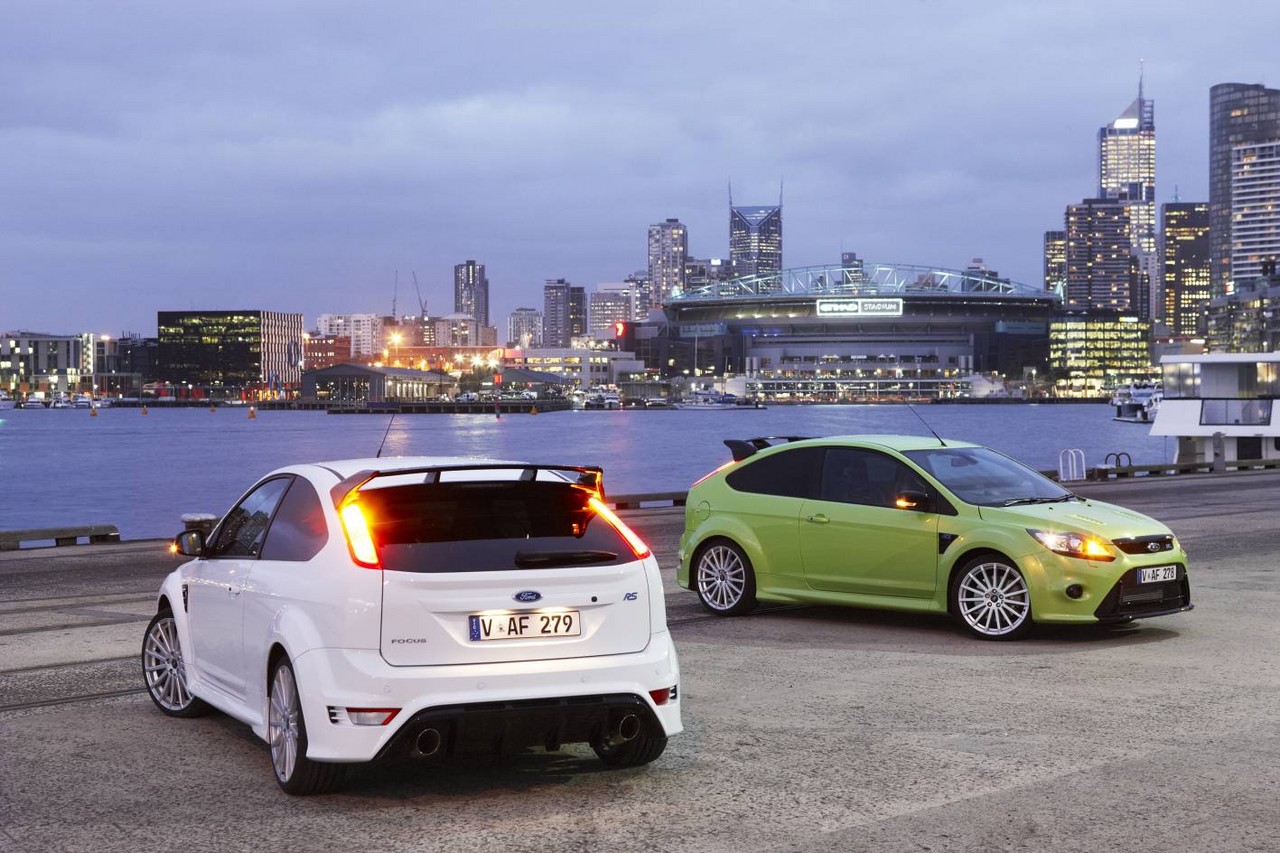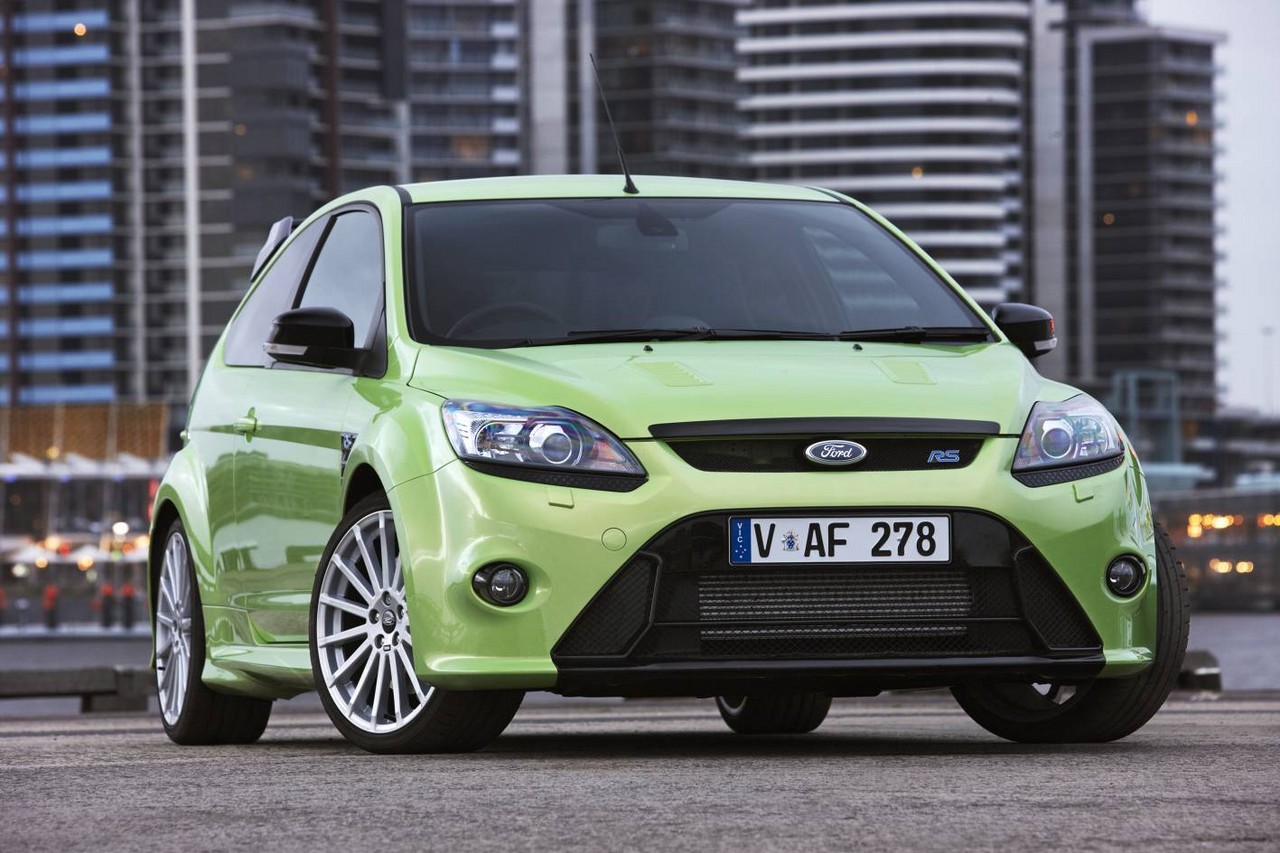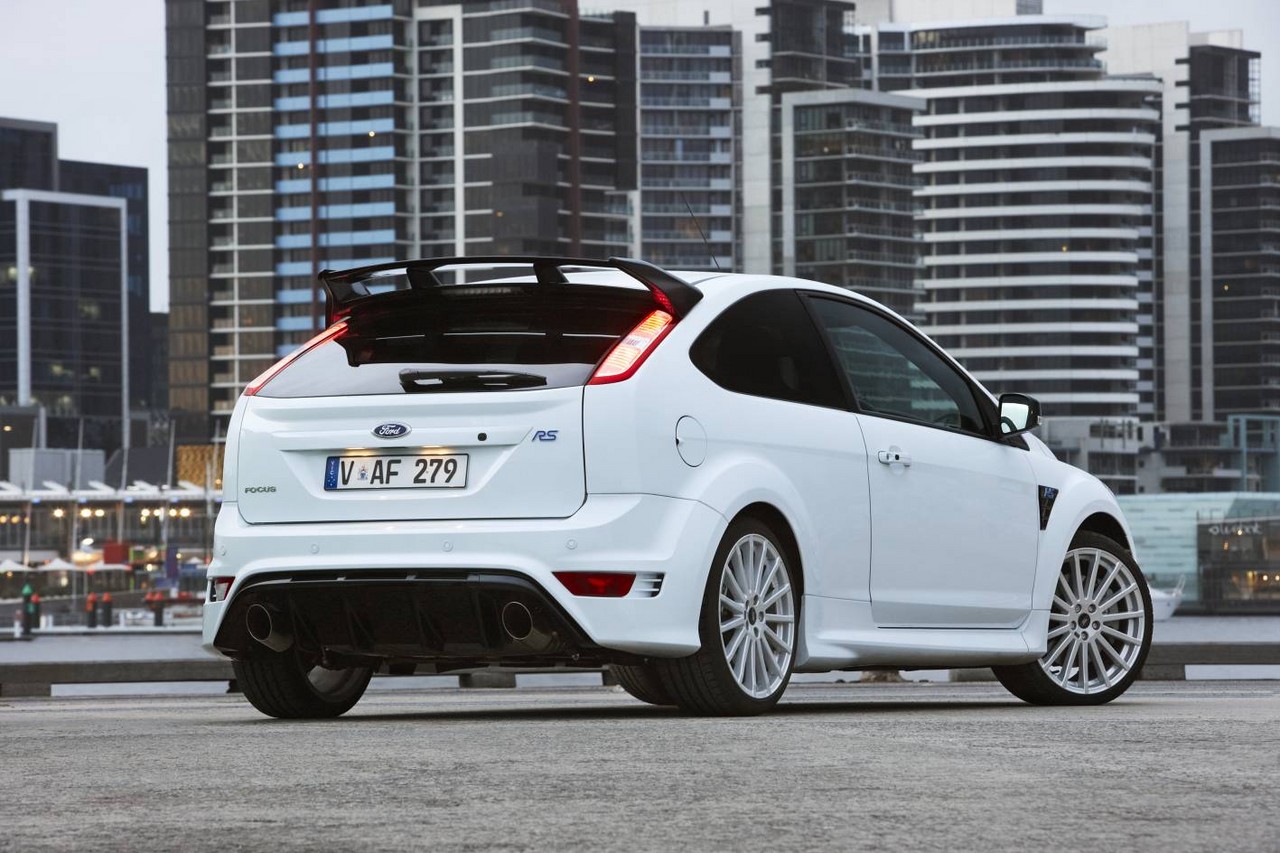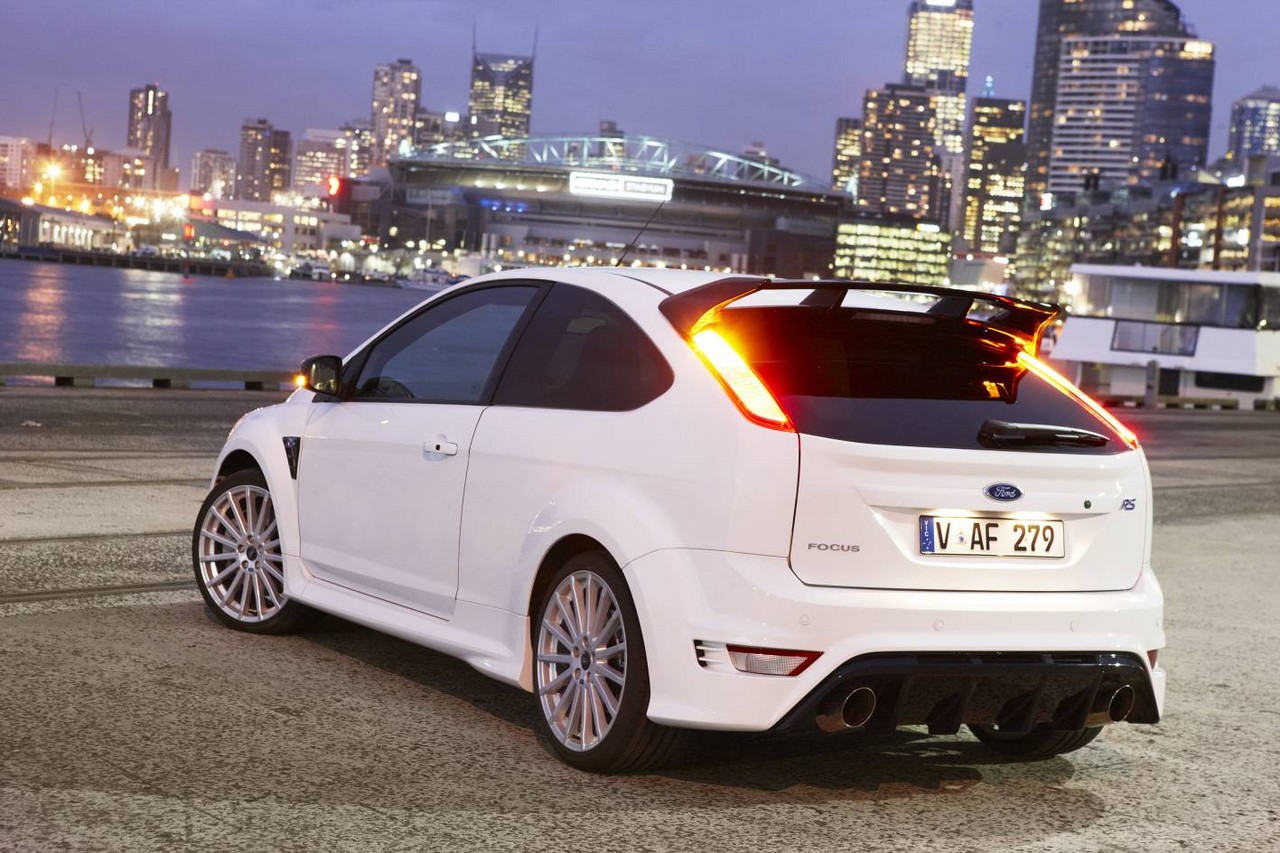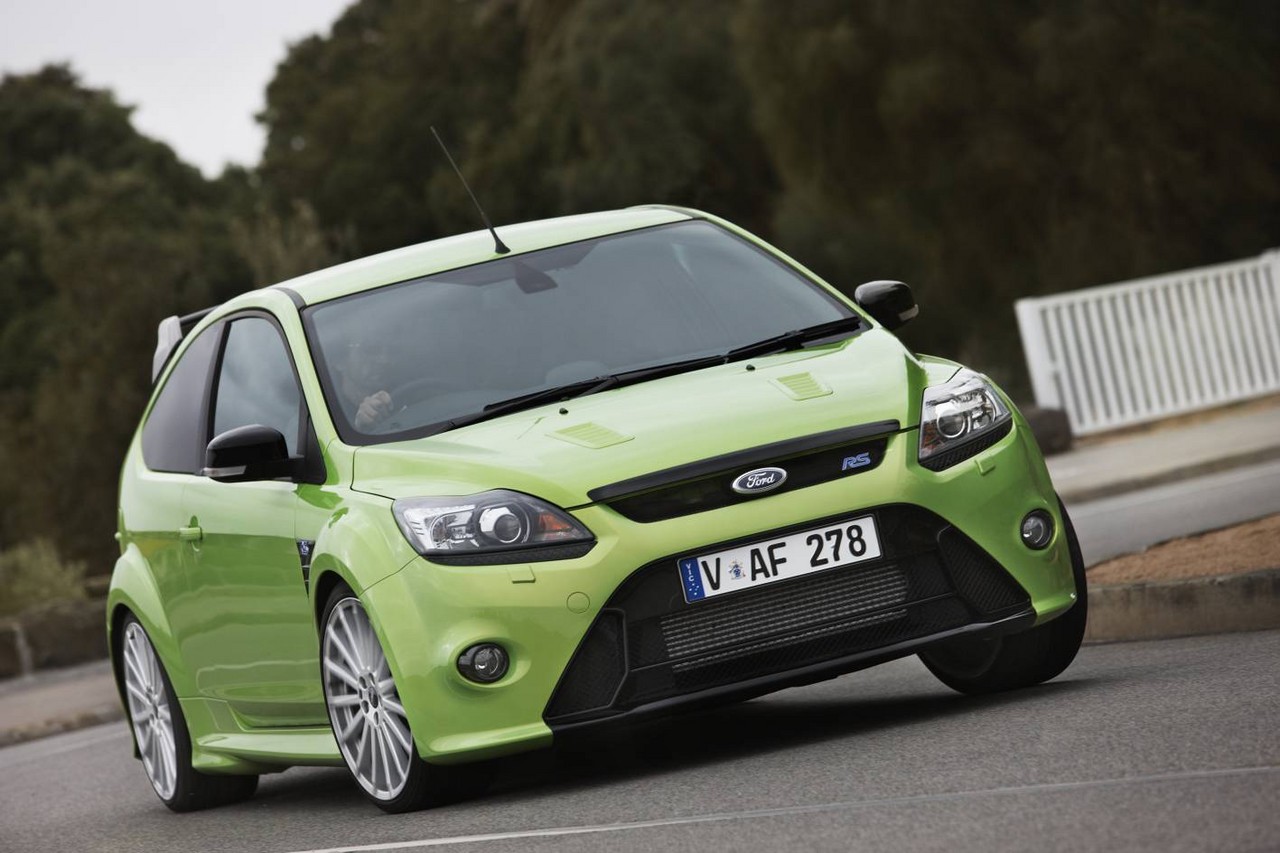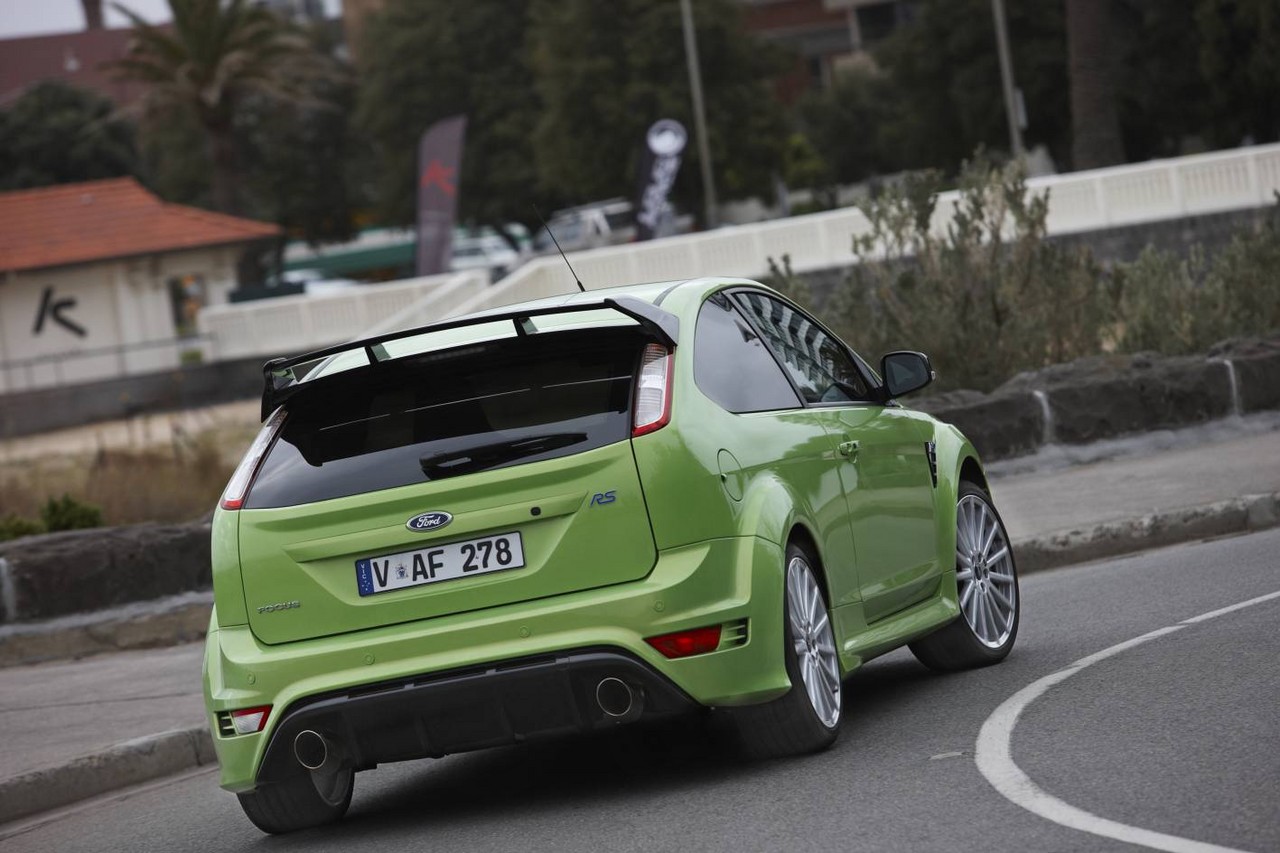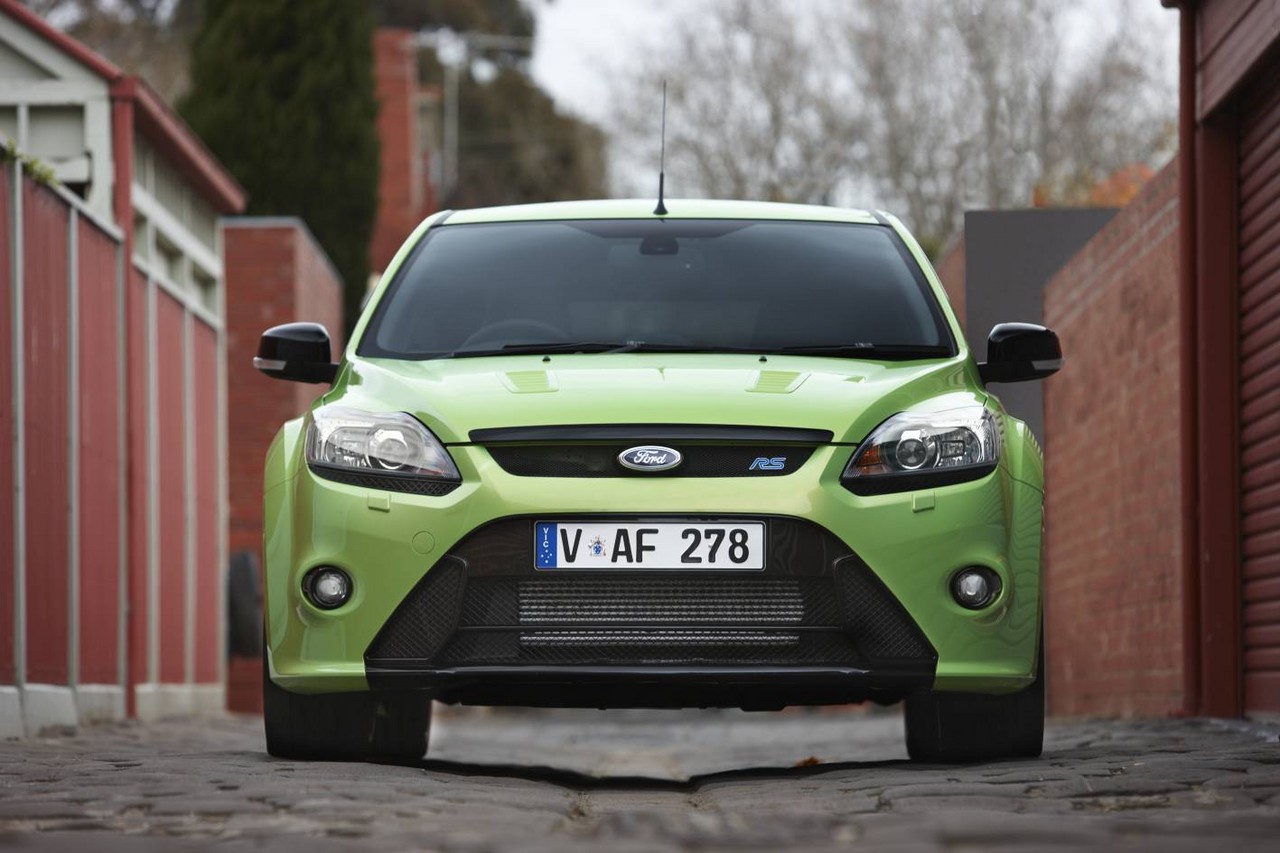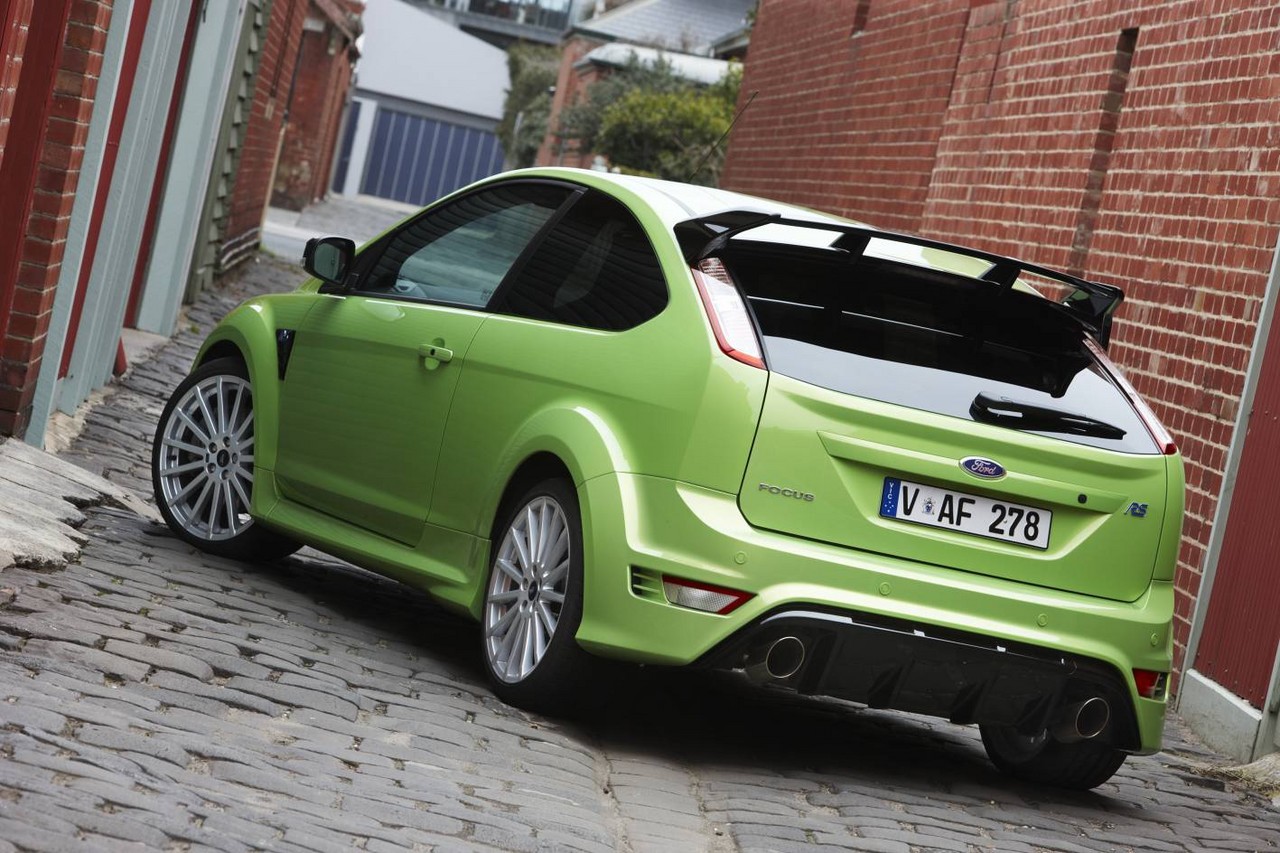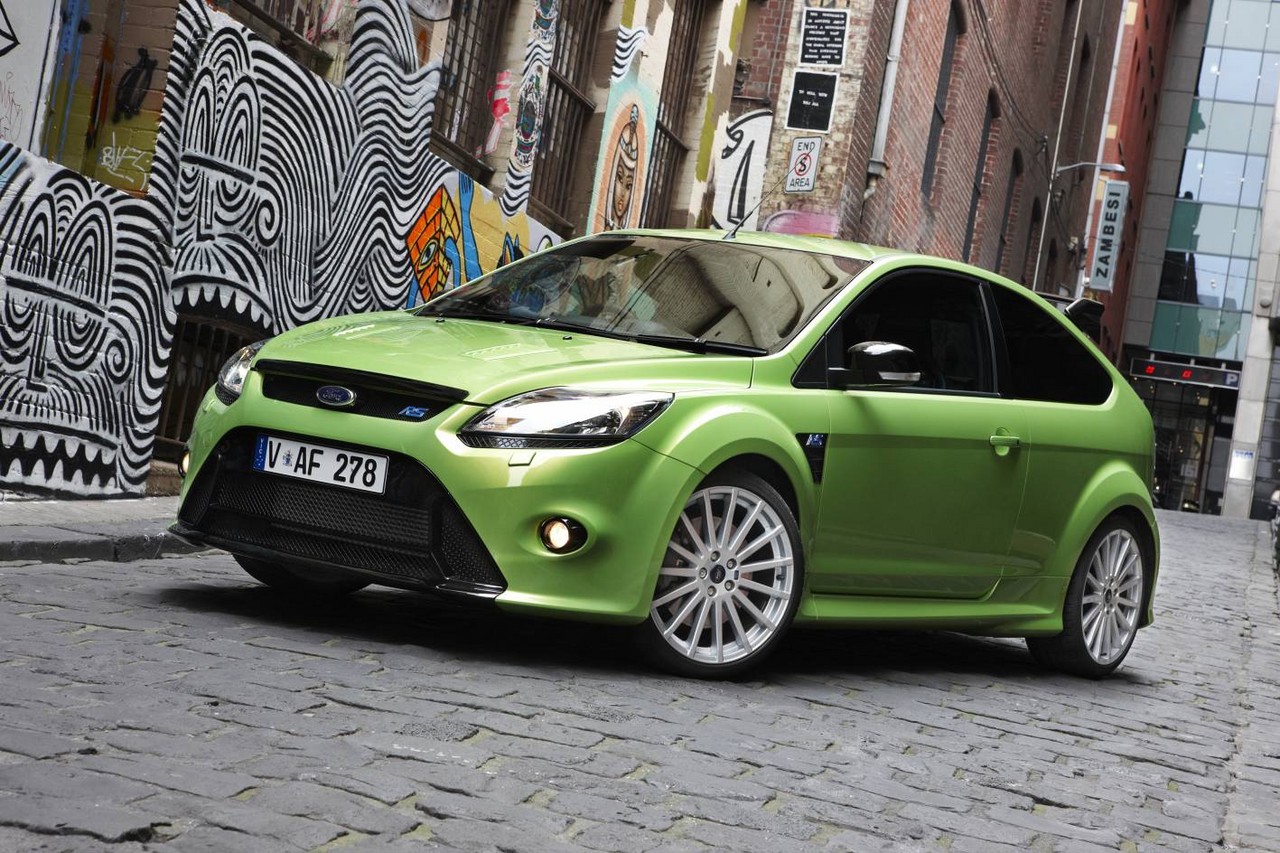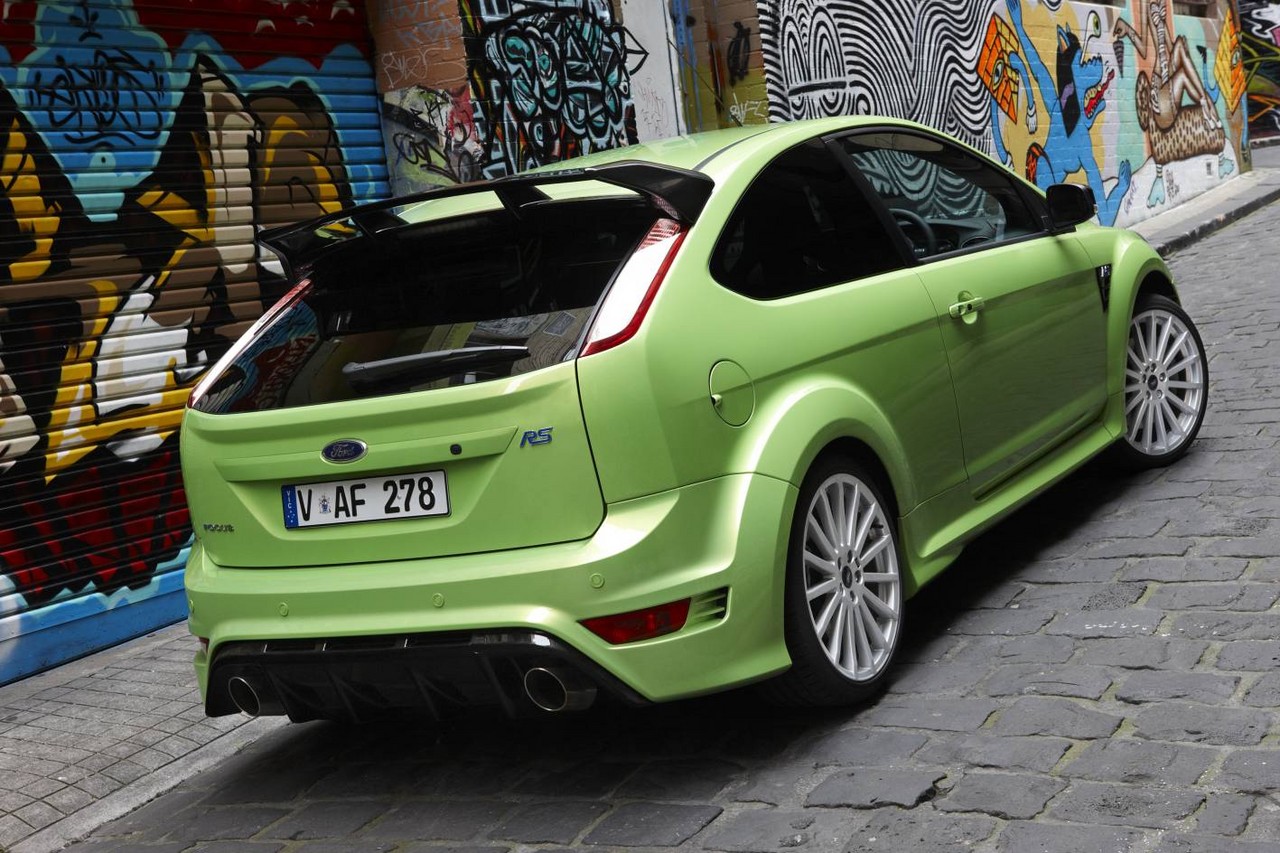
- Powerful and characterful 2.5-litre turbo I5 engine
- Excellent dynamics
- Accurate and well-weighted steering
- Firm ride
- High seating position
- Cruise control not available
- Cheap interior plastics
Overview
While production of the Ford LV Focus RS commenced in January 2009, it was not released in Australia until September 2010. Manufactured in Saarlouis, Germany, the three-door, front-wheel drive Focus RS was powered by a 2.5-litre turbocharged petrol engine that was mated to a six-speed manual transmission.
Worldwide production of the Focus was originally intended to be limited to 7000 vehicles, though high demand resulted in the production of 11,000 vehicles. Australia deliveries of the Focus RS were limited to 315 vehicles.
Duratec RS engine
The ‘Duratec’ inline five-cylinder petrol engine for the Focus RS had an aluminium block and cylinder heads, fracture-split steel connecting rods, a K16 Borg Warner turbocharger which provided maximum steady state boost pressure of 1.37 bar, an intercooler, double overhead camshafts, continuously variable valve timing for the intake and exhaust camshafts, four valves per cylinder and a compression ratio of 8.5:1.
Compared to the engine in the Focus XR5 Turbo, changes included:
- Ultra-durable metal sprayed cylinder bores;
- Revised pistons;
- A unique camshaft profile and connecting rods (allowing bigger small-end bearings);
- Peak boost pressure of 1.37 bar from the K16 Borg Warner turbocharger, compared to 0.65 bar from the XR5 Turbo’s K04 turbocharger;
- Lower compression ratio (8.5:1 compared to 9.0:1 for the XR5 Turbo);
- A new intake system with a larger intercooler;
- A revised cylinder head gasket;
- A new exhaust manifold; and,
- New engine management system.
The Focus RS could accelerate from rest to 100 km/h in 5.9 seconds and had a top speed of 262 km/h.
Dimensions and weight
The Focus RS was 4402 mm long, 1842 mm wide (excluding mirrors), 1484 mm tall and had a 2640 mm long wheelbase. Compared to the standard Mk.2 Focus, the Focus RS had a 40 mm wider track and a rear diffuser and wing to increase downforce. Visually, the Focus RS could be identified by its flared wheel arches, unique bonnet with integrated twin louvres, side skirts and aggressive bumpers.
The Focus RS had a kerb weight of 1492 kg, 75 kg greater than the XR5 Turbo – this increase was attributable to the larger wheels, tyres and brakes, limited slip differential (described below), aerodynamic and cooling aids. Furthermore, the Focus RS had a drag coefficient of 0.38 Cd.
Suspension and RevoKnuckle design
Rather than the MacPherson strut front suspension of the Mk.2 Focus, the front suspension for the Focus RS had a two-piece suspension knuckle whereby one piece was fixed to the strut and another part rotated with the steering line of the car (Ford’s ‘RevoKnuckle’). Rather than have an inverted L-shaped lower suspension mount, the RevoKnucle had a C-shaped mount that was connected to both the wheel hub (via two arms) and to the strut which was attached at its top. The RevoKnuckle design enabled the distance between the wheel centre and steering axis line (also known as the ‘king-pin offset’) to be reduced, thereby minimising torque steer, since it created a separate king-pin axis.
Like the Mk.2 Focus, the Focus RS had multi-link rear suspension.
Quaife Helical Limited-Slip Differential
The Focus RS was fitted with a Quaife helical limited-slip differential which had six planetary gears; the differential also had an ‘Automatic Torque Biasing’ function which enabled it to alter the torque distribution between the front wheels.
| Engine | Trans. | Peak power | Peak torque | |
|---|---|---|---|---|
| Focus RS | 2.5-litre turbo petrol I5 | 6sp man. | 224 kW at 6500 rpm | 440 Nm at 2250-4500 rpm |
Safety equipment
Standard safety equipment for the Focus RS included dual front airbags, full-length curtain airbags, ABS, electronic brake force distribution, brake assist, electronic stability control, traction control and front seatbelts with pretensioners and load limiters.
Brakes
The Focus RS had 336 mm by 30 mm vented front brake discs with single 60 mm callipers and 302 mm by 11 mm solid rear discs.
Features
Standard features for the Focus RS included 19-inch, 15-spoke alloy wheels with 235/35 R19 Continental tyres, an eight speaker Sony sound system with digital radio (DAB), MP3-compatibility, a six-disc CD player and auxiliary inputs (3.5 mm/USB/iPod), Bluetooth connectivity with voice recognition, dual-zone climate control air conditioning, Recaro front seats with leather seat trim, xenon headlights with washers, front fog lights, rain-sensing wipers, rear parking sensors, a leather-wrapped steering wheel, 60:40 split and folding rear seats, remote central locking, power windows and mirrors, a tilt and reach adjustable steering wheel, a height adjustable driver’s seat, heated windscreen, an electrochromatic rear view mirror, push-button start, tinted windows, rear privacy glass, tyre pressure monitoring, a trip computer, an alarm and immobiliser.
Paint colours
The Focus RS was available in Ultimate Green, Performance Blue and Frozen White paint finishes.
Brochure
Related links
- Press Kit: Ford LV Focus RS (September 2010)
- Ford Newsroom: Focus RS Confirmed for Australia (August 2010)
- Wikipedia.org: Ford Mk.2 Focus RS
